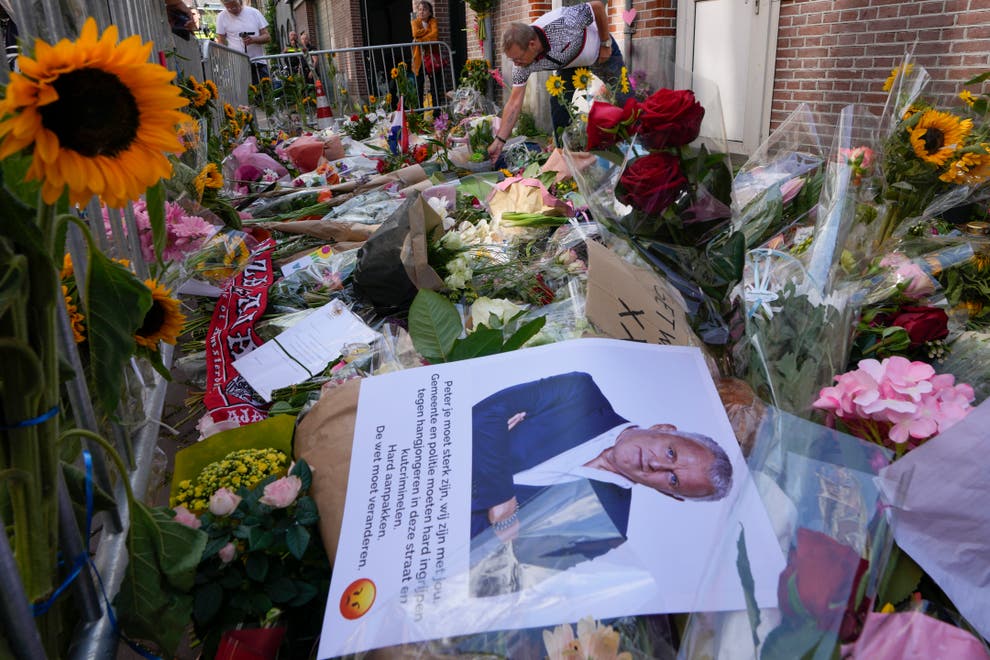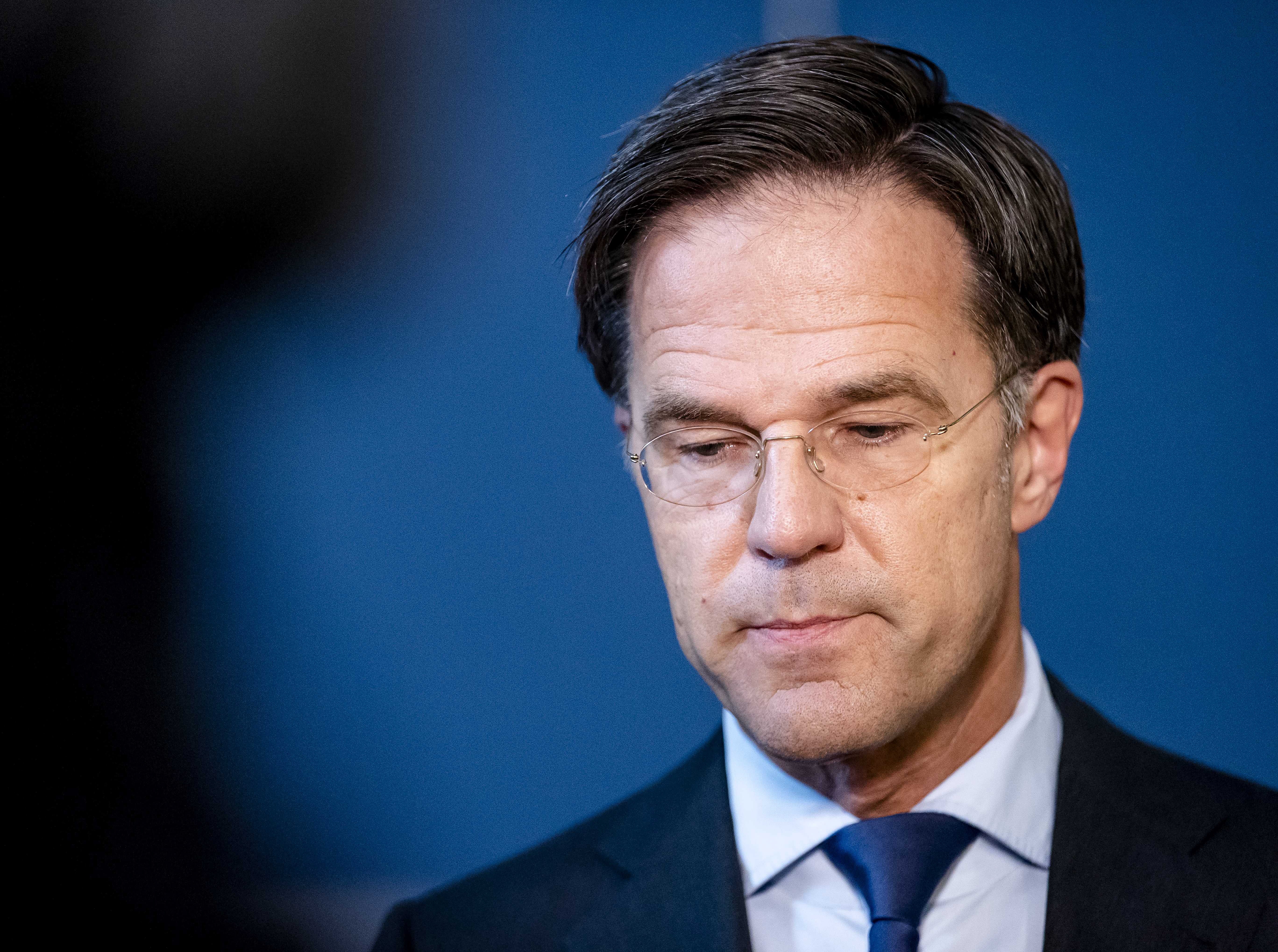Violence in Gangsterdam: How security fears for Dutch PM revealed power of Netherlands’ drug gangs
The Netherlands has a drug and crime issue, with research showing 80,000 lines of coke are snorted each day in Amsterdam and Rotterdam, reports Leo Cendrowicz

Over the past 11 years that he has been prime minister of the Netherlands, Mark Rutte has been a familiar sight in the streets of The Hague, cheerfully cycling to his office without any visible security presence.
But this week Dutch police moved to change that, stepping up his security detail. There was no formal explanation for the new measures, but behind the scenes, officials explained why Mr Rutte needed the protection: the country’s increasingly bold drug gangs were plotting to kidnap him.
The rise of violent and powerful drug gangs in the Netherlands has been fast and shocking.
They were linked to the high-profile murder of crime reporter Peter de Vries in July and a lengthy list of other brutal killings in recent years. These include the 2014 peppering of crime lord Gwenette Martha with more than 80 bullets outside a kebab shop, a severed head left on the pavement outside a shisha lounge in 2016 in Amsterdam, and the lawyer for a state witness in a major mafia trial who was shot dead in front of his wife outside their home in 2019.
Beyond the killings, there are other grisly atrocities. Last year, police discovered a secret torture chamber near the Dutch border with Belgium that had been built into an old shipping container. Footage of members of a Belgian gang known as the Turtles being tortured with a soldering iron was uploaded to the internet (and later re-enacted in a Belgian black comedy, Gangsta).
The attacks have spread far beyond gang rivals and now include prosecutors, lawyers, witnesses and journalists – with the offices of one major newspaper being hit by an anti-tank rocket in 2018.
These gangs are known locally as the Moroccan mafia, or ‘Mocro Maffia’, a term coined by crime reporter Wouter Laumans, who used it as the title of his bestselling novel about the rise of an Amsterdam crime family.
It refers to the north African link of the global drug trade chain that starts with raw cocaine from Colombia and is shipped to west Africa and smuggled into Rotterdam via Morocco – sometimes through the same family connections that trafficked hashish and marijuana two generations ago.
“Young Moroccans are heavily represented, also people from the Antilles and Surinam,” says Laumans. “You could say, cynically, that ethnic integration works very well in these gangs.”
Laumans says the gang violence is escalating, and civilians are increasingly caught in the crossfire with what are known as “mistake killings”.
“It is getting worse and worse, and with each new incident generating a ‘wow’ factor. Everyone is wondering what will happen next,” he says. “And while the authorities are acting, the drugs gangs are like a hydra, a dragon with many heads. It’s harder and harder to stop them.”
Indeed, Dutch police have been seizing more and more drug shipments. On Wednesday in Rotterdam, they intercepted 1,400kg of cocaine hidden in a consignment of cocoa, with a street value of €105m (£90m).
Last year, customs officers impounded some 48 tons of cocaine in the ports and at Amsterdam’s Schiphol airport, a rise of 24 per cent compared to 2019.
It is getting worse and worse, and with each new incident generating a ‘wow’ factor. Everyone is wondering what will happen next
Police have also raided record numbers of synthetic drug labs making crystal meth, MDMA and amphetamines, but this is only a fraction of the total street value of these drugs, thought to be worth more than €20bn a year.
Last week, the Netherlands justice minister Ferd Grapperhaus said the cost of the gangland drugs industry to society was €4.1bn a year, with extra policing estimated at between €1.1 and €1.6bn, and the medical costs for the state of treating drug addiction another €250m.
But authorities feel increasingly outgunned. In 2019, a report commissioned by Amsterdam authorities warned that the city had “given free rein … to a motley crew of drugs criminals, a ring of hustlers and parasites, middlemen and extortionists, of dubious notaries and real estate agents”.
Last month, Rotterdam chief commissioner Fred Westerbeke revealed the results of research on sewage in Rotterdam and Amsterdam that showed around 40,000 lines of coke are snorted every day in each city.
Police unions admit they are being outmanoeuvred by gangs who launder money through shops, restaurants and a booming property market. “Criminals approach officers by stealth,” said Jan Struijs of the police union, NPD. “Today’s officers need training to handle it.”
Why have these violent gangs taken such a hold in the Netherlands? Because it is the gateway to Europe, as the continent’s biggest logistical hub, says Hans Nelen, a criminology professor at Maastricht University and chair of Centre for Information and Research on Organised Crime.
“We have always been traders through history, going back to the Golden Age, and even the slave trade. We have the logistics with the Rotterdam port and Schiphol airport. And we have people who are ready to make money,” he says, adding other factors like open EU borders and financial incentives that attract illegitimate investments.
Prof Nelen says that a new generation of younger and more ruthless gangsters has emerged in the past decade.
“When they start shooting people in the street, you see that they want to send a message to authorities and society at large that they are somehow untouchable. They’re raising a middle finger to us,” he says.
But he warns that they will eventually run into resistance if they go too far in challenging authorities and social values. “The moment they do this, they will incite a counter-reaction – and we saw this in Italy when the Mafia started targeting judges – which will culminate a fierce response,” he says.
Europe’s booming cocaine market is driving the drug wars: Europol and the UN’s Vienna-based drug and crime office, UNODC, say it is now worth as much as that of the United States.
Last month, the two agencies published a report saying that the Netherlands and Belgium have become Europe’s cocaine hubs, overtaking Spain as the primary smuggling route.
“The epicentre of the cocaine market in Europe has shifted northwards,” they said. Only Antwerp, just some 100km (60 miles) from Rotterdam, rivals the Dutch port for cocaine seized, with authorities intercepting some 65.6 tons last year.
But despite the headline-grabbing antics of the gangs, authorities and onlookers insist that the Netherlands has not descended into a “narco-state”.

While the murders are shocking, the rate is nowhere near that of Mexico, where drug-related killings claim 14,000 lives a year. Indeed, the overall homicide rate, at 0.6 per 100,000 people, is one of the lowest in the world, and in 2019, murder and manslaughter cases hit a 20-year low of 125. And the government is taking action. Last week, the budget for 2022 included an extra €524m to fight organised crime.
Lieselot Bisschop, a criminology professor at Erasmus University Rotterdam, admits that drug crime is surging, but says the Netherlands is still a peaceful place.
“It may be overstating it to say that the gangs are out of control: we still have a well-functioning police and legal system that you can trust,” she says. “Overall, the Netherlands is still a safe society. But some areas need improvement.”






Join our commenting forum
Join thought-provoking conversations, follow other Independent readers and see their replies
Comments